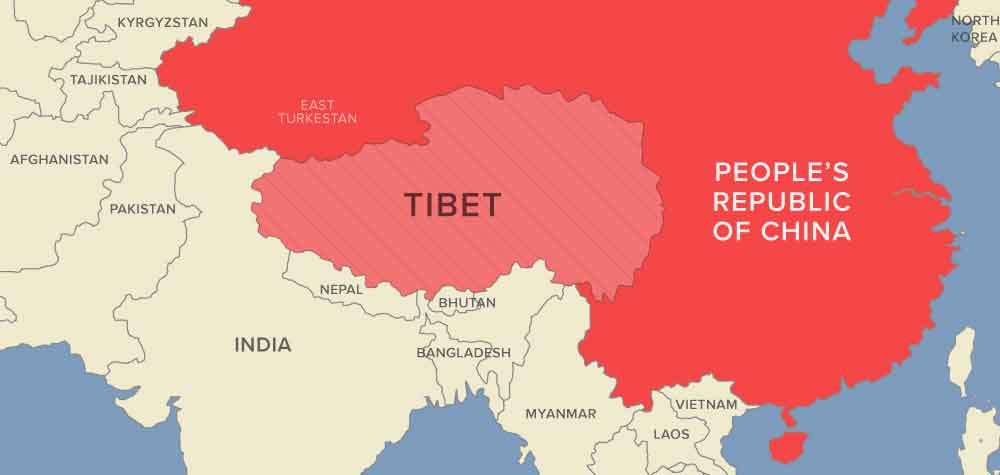While the anniversary of China’s illegal annexation of Tibet went seemingly unnoticed among the Tibetan diaspora, in Beijing, a press conference was held to commemorate the occasion. The people of Xizang (China’s new name for the western half of Tibet proper which it demarcated as Tibet autonomous Region (TAR), if only in name) broke free from the fetters of invading imperialism, embarking on a bright road of unity, progress and development with all the other ethnic groups in China, reported China’s official globaltimes.cn May 23. China has to this day not named any “invading imperialist” power it claims to have saved Tibet from.
The press conference was reported to have been addressed by Yan Jinhai, chairman of the TAR government, and Xu Zhitao, its vice chairman, with focus especially on “ethic unity”, a frequently used official euphemism for the insidious dilution of the ethnographic identity of Tibet, and on the region’s development in tourism and clean energy. The officials have clearly avoided any mention of China’s massive, environmentally devastating mining industry in the Tibetan homeland.
Over the past 73 years, under the strong leadership of the Communist Party of China (CPC), the region has strived to forge a new path for high-quality economic development, with people from different ethnic minorities living happily together. Tourism resources continue to attract visitors from both home and abroad, the report cited the TAR officials as saying at the press conference.
“Now, the various ethnic groups of Xizang residents are living in a favourable atmosphere of political stability, ethnic unity, religious harmony with improving living conditions. All of this is closely related to the agreement signed 73 years ago,” Xiong Kunxin, a professor at Minzu University of China in Beijing, has said.
China compelled a Tibetan government delegation to sign at gun-point on May 23, 2951 a 17-Point Agreement which promised a form of “one country two system” policy for Tibet. China trashed that agreement in 1959 after a popular Tibetan uprising that started in capital Lhasa on Mar 10. China then unleashed a violent policy of Sinicization of the region along with its economic modernization and development.
Theregion will work on enhancing the range of tourist offerings and improving the efficiency of processing documents for foreign visitors entering the region, the report cited the two TAR government officials as saying on Thursday (May 23), “the 73rd anniversary of the Xizang peaceful liberation”.
Yan – said to be a Tibetan from Qinghai province with Chinese name – has said that in 2023, the number of trips paid to the region reached 55.17 million from home and abroad, and the tourism revenue reached 65.1 billion yuan ($9 billion), up 83.7% and 60% respectively compared with the previous year, both reaching record highs. He has added that nearly 20,000 foreign tourists visited TAR in 2023 and the number of foreign visitors reached 4,300 in the first quarter of this year.
Referring to TAR as the “city of sunshine” where the annual sunshine time is 3,500 hours, Yan has said the region has a potential solar energy development capacity of 9.8 billion kilowatts, 1.7 billion kilowatts of hydropower resources, and 1.8 billion kilowatts of wind energy, excluding geothermal and pumped storage energy. The total installed capacity exceeds 10 billion kilowatts, all of which are clean energy sources, Yan has added.
The report cited Xu, an ethnic Chinese, as saying the region will enhance the range of tourist offerings and improve the efficiency of processing documents for foreign visitors entering TAR. He has said that initiatives focusing on language translation and e-payment systems will further enhance the appeal of TAR to international tourists.
He has also said TAR willopen more direct flights to mainland cities and international markets, “which will attract more investment enterprises to enter the local cultural tourism market.”
.tibetanreview.net

